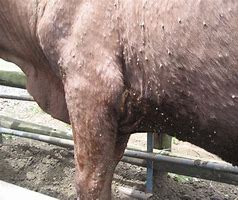

Ticks are some of the most problematic pests on cattle farms despite presence of various acaricides in the market. Many farmers use poor tick control methods, which include failure to spray as recommended, making the parasites develop resistance to acaricides.
Some farmers control ticks only when they physically see them on their animals, meaning they do not curb the immature ones and the small brown-ear tick, which is not noticeable without closer examination.
Ideally, spraying or dipping should be done every week and all animals must be sprayed. Some farmers select those to spray and leave others believing they are saving costs.
Effects of tick infestation
It leads to poor health of animals, damage of the cattle skin, tick-borne diseases and loss of income through abortion, high treatment costs and death of valuable herds.
Tick-borne diseases are very costly to treat and more often than not cause death of affected livestock.
There are two types of ticks ie. hard shell and soft shell ticks. There are many tick-borne diseases affecting livestock, but the three most common and severe are East Coast Fever (ECF), Anaplasmosis and Babesiosis.
ECF affects both indigenous and hybrid cattle and is spread by the brown ear-tick, which has a three-host life cycle and spends every week long stage of its life in a different animal. It molts at the end of every week.
The tick is very small making it hard for farmers to notice it on livestock. It inhabits hidden areas, including around and inside ears, the base of the tail, around udders, and dewlap. Many farmers only look for blue ticks as an indication of tick infestation, but there are the concealed brown ear ticks, which are hardly noticeable without careful examination during their development stages.
Anaplasmosis, commonly known as Yellow Fever, is spread by blue ticks, which are noticeable. It causes high fever and dehydration leading to hardening of the animal’s dung and anaemia. The disease is difficult and expensive to treat because of its recurrent nature, leading to significant losses. But it can be controlled by proper spraying every week using an effective acaricide.
Babesiosis commonly known as Red water or tick fever is spread by blue ticks and damages red blood cells leading to red urine.
The disease causes significant losses if not treated, but can be controlled by spraying the animals with an effective acaricide every week.
Spraying your cattle
The recommended spraying procedure takes 10-15 minutes for every animal using a good knapsack sprayer. Spraying should be done starting from hind hooves, up the hind limbs, udders and inner thighs, down the tail to the whiskers, under the belly, front hooves, up front limbs to the dewlap, the back and sides of the body, top of neck, in and around ears and front of head.
Using a faulty spraying equipment does not effectively apply the acaricide to the skin of the animal, leading to failure to eliminate all ticks.
 Contact Jaguza Support
Contact Jaguza Support